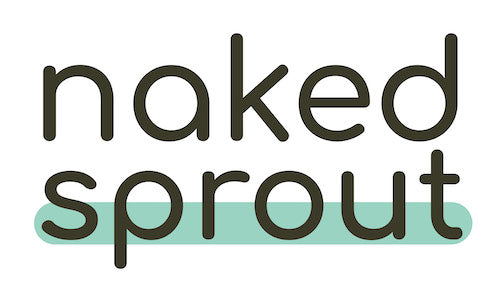Who Invented Toilet Paper? (and other tissue trivia)

We’ve got something a bit different for you this week - a special treat for anyone about to enter a pub quiz, play some festive Trivial Pursuit, or just burning with a desire to learn more about toilet habits through the ages.
Yes, today we’re talking about the history of toilet rolls. Buckle up as we unroll the long and sometimes controversial story of this often unsung bathroom hero.
Pre-tissue alternatives to toilet paper
Visiting the loo is a basic fact of life; all living organisms eat, and all of them need to get rid of waste. Where we differ from the rest of the animal kingdom is that we clean up afterwards!
So what did people use before toilet roll was invented?
In most cases the answer is “whatever they could find”. In the UK there is a tradition of using dock leaves, which are flat and broad and grow abundantly in our fields and woods. People who lived near coasts have often used seashells, and in the Midwest of the United States, where they grow a lot of corn, the soft husks of corn cobs would be saved for the purpose!

The earliest toilet paper
The very first recorded mention of paper being used in the toilet comes from China in 500 AD. Writing about the work of other scribes, the scholar Yen Chih-Thiu made a cheeky mention of texts that were far too valuable to “use for toilet purposes,” meaning that there were some documents that weren’t!
The popularity of paper products in China continued, with paper specifically made for the toilet being mass-produced by the early 14th Century. It took more than 500 years for the rest of the world to get involved.

The first commercial toilet paper
The first standardised tissue product designed and mass produced outside of China came in 1857 - when Joseph Gayetty of New York started to make and sell toilet paper in flat packs of 500 sheets. Gayetty’s “Medicated Paper for the Water-Closet” was advertised as a healthy alternative to the printed newspaper that was often used at the time.
Toilet paper grew in popularity through the rest of the Victorian era, aided by the simultaneous spread of the public flushing toilets invented by British engineer George Jennings.
Fun fact, flushing toilets were first put on display at the Great Exhibition of London in 1851. Visitors to the exhibition could use these remarkable new conveniences at the cost of one penny, and this is where the phrase “spend a penny” comes from!

The first toilet rolls
By the late 1800s we have toilet paper in sheets, and flushing toilets. But we’re still missing a central element, the cardboard tube!
Toilet paper is first sold in rolls rather than flat packs by Seth Wheeler in the United States, in 1871. Wheeler’s company are also the first to perforate their sheets, meaning that small amounts could be torn off easily.
Now, with our toilet paper finally on rolls we have a dilemma. We promised controversy and here it is - which way should a toilet roll hang?
This is hotly debated. When the US advice columnist Ann Landers gave her opinion on the topic her piece received more than 15,000 letters in response!
We’ve seen this ourselves at Naked Sprout - any picture on our social media that features a roll hanging on a holder will attract debate, with over-hangers and under-hangers passionately arguing for each side. But we have to thank a few particularly well-informed customers, who have pointed to this article, which includes images from the original patent of Seth Wheeler’s toilet rolls:

So over-hanging is what early manufacturers had in mind, but what about us?
We’ll happily take greenwashing and offsetting to task, but we know better than to wade into this one - we’ll leave it up to your preference!
When did toilet paper become soft?
By the 1900s toilet paper is being sold in sheets, on rolls. We’re most of the way there, but there’s still one more aspect of a toilet roll we think is pretty important; softness.
Up until the mid 1900s the paper on mass-produced rolls had more in common with baking paper than the soft sheets we know today. And that wasn’t the worst of it, as late as the 1930s one brand marketed their rolls as “100% splinter free,” leaving us to assume some weren’t!
Soft household tissue was first popularised in the UK in the 1940s by St Andrew’s Mills, who became Andrex, but it took a while for soft sheets to become the uniform standard. Crispy, waxed toilet rolls were still used widely in schools and public lavatories in the UK well into the 1990s. Those of us who remember using this scratchy stuff would probably rather go back to dock leaves!

So who invented toilet paper?
After all of this - who would we call the inventor of toilet rolls? If the question comes up in a quiz you can ask the quizmaster to be more specific! Do they mean the first toilet paper, the first time it’s on a roll, or the first time it’s the soft tissue we rely on today?
Having toured the history we’ll say that the biggest strides towards modern toilet rolls are made by Seth Wheeler in the 1890s, whose company was the first to roll toilet paper using perforated sheets.
(though you still had to watch out for splinters!)
And if you want toilet roll that’s softer than corn husks and more sustainable than ancient documents, we’d recommend Naked Sprout ;)




